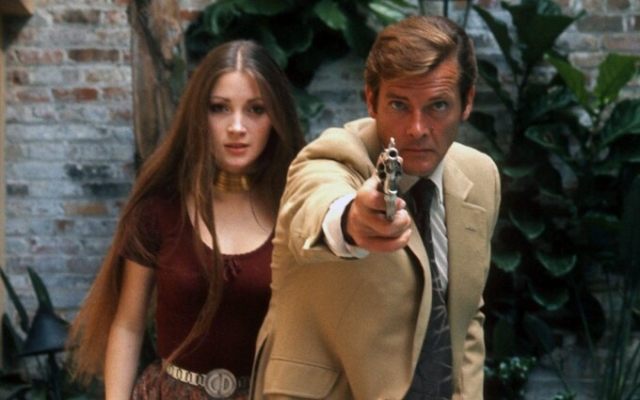 Jane Seymour and Roger Moore in Live and Let Die. Photo: Anwar Hussein/Alamy Stock Photo
Jane Seymour and Roger Moore in Live and Let Die. Photo: Anwar Hussein/Alamy Stock Photo
Roger Moore was dizzy like a champagne-drinking schoolboy when he landed the role of James Bond. It was 1972. Rocky Taylor, Moore's good friend and occasional stunt double, remembers that day well. Taylor and Les Crawford, Moore's personal stuntman at the time, walked through the corridors of Pinewood Studios. “Suddenly, Roger’s head popped around the corner,” Taylor recalls. «He said, 'Rocky, Les, quick, hurry up!' We ran after him — we thought he was in trouble. He said: “You are looking at James Bond now. I just signed with Cubby Broccoli!” We danced around the hall like little children and drank a glass of champagne. It was just a magical moment.»
For Moore, dancing and singing «I'm James Bond! I'm James Bond!» “The deal with 007 has been in preparation for several years. He has been close to playing James Bond before.
A year later, in the summer of 1973, Moore made his Bond debut with Live and Let Die. This film, which is now 50 years old, is not the most outstanding of Roger's Bonds, but it is certainly significant: this is the first of Moore's seven record performances as 007 and the first truly successful (in terms of box office) «new» Bond. Also interesting is the fact that Bond has already passed his cultural heyday — as a beautiful embodiment of Moore, Bond's dad's favorite. The series tried to keep up with the times with a one-time foray into Blaxploitation, but paired with the best of the series: Jane Seymour as Solitaire, a top-tier Bond girl; a speedboat chase that set a new standard for stunts; and an adrenaline-pumping theme from Paul McCartney and Wings.
“Daniel Craig's debut film, Casino Royale, is often called the film that reinvented Bond,” says Matthew Field, co-author of the Bond film history Some Kind of Hero. “But it was actually Live and Let Die that re-evaluated what a James Bond film could be.”
Roger Moore was apparently in the frame for Bond as early as 1962, when EON Productions was casting for the first film, Dr. No. Although in reality no one told Moore. “I didn’t know about it, of course, and no one contacted me,” he wrote in his brilliantly titled memoir, My Word, My Bond. But Moore was really connected to the show. He had been friends with Sean Connery since the early 1960s and played cards with EON producing partners Albert «Cubby» Broccoli and Harry Saltzman.
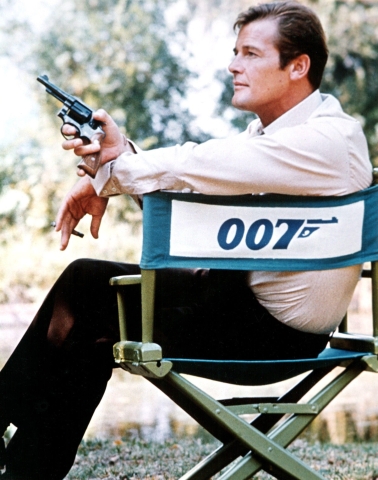 Roger Moore on the set of Live and Let Die, 1973. Photo: Everett Collection Inc/Alamy Stock Photo
Roger Moore on the set of Live and Let Die, 1973. Photo: Everett Collection Inc/Alamy Stock Photo
And Moore saw with his own eyes the problems with the remake of Bond. He attended a preview screening of George Lazenby's On Her Majesty's Secret Service in the title role. It ends darkly with the murder of Bond's new bride. Moore heard producer Bob Goldstein say to Saltzman, “You made a mistake, Harry. You should have killed him and saved her.”
Moore ran for the 1971 follow-up Diamonds Are Forever, but missed it due to his commitment to the ITV action film The Persuaders. Instead, Connery — burlier and clearly wearing a wig — returned for the last time in an «official» Bond movie. There was some speculation about Connery's successor when he took a good friend to the London premiere: Roger Moore.
Moore looked like he was being kicked out, and as the role was played out, he refused to do a second series of The Persuaders. Other names were also mentioned. English actors Julian Glover and Michael Billington were screen tested. Cubby Broccoli considered American actor John Gavin, who was once billed as the new Bond. Director Guy Hamilton liked Burt Reynolds, and distributor United Artists needed Paul Newman or Steve McQueen. Filers also turned to Clint Eastwood, who later recalled, «For me, [Bond] was somebody's performance.» And it was.
On August 1, 1972, at a press conference at London's Dorchester Hotel, Roger Moore was introduced as the new James Bond. «This is the role I've always wanted,» Moore told reporters. Moore claimed he was eventually convinced when he asked his six-year-old son who he liked better: «James Bond or his father?» (Obviously Bond.) A three-movie deal worth $1 million plus interest probably helped make the decision. p>Moore stood in the courtyard of the Dorchester penthouse, smoking a cigar and drinking scotch — of course, in the pure Rog style, not unlike his more cheerful Bond story. Moore was worried about following Connery — when he said «that's the name Bond, James Bond» he caught himself mimicking Sean's Scottish accent. To distinguish him from Connery drinking vodka, martinis and smoking cigarettes, Moore's Bond drank bourbon and smoked cigars (ridiculously, in one scene he puffed on a massive cigar while parachuting).
Moore, too, initially refrained from wearing the classic tuxedo; instead, he struts around Live and Let Die like a gaudy menswear ad, dressed in various ensembles that only Roger Moore could have worn with such nonchalance.
Broccoli and Saltzman criticized Moore constructively for his appearance before the cameras turned on. He was told that he was too fat, too out of shape, and that his hair was too long. «Why didn't you just pick a skinny, fit, bald guy and make me go through all this hell?» Moore snapped.
Harry Saltzman became lead producer on Live and Let Die. Broccoli and Saltzman alternated, taking over the reins of every other film. It was a strategy to keep them out. Cracks appeared in their working relationship. Jane Seymour recalled the awkward argument between Broccoli and Saltzman at her audition over which of them saw her first. Later, the producers shared only two films.
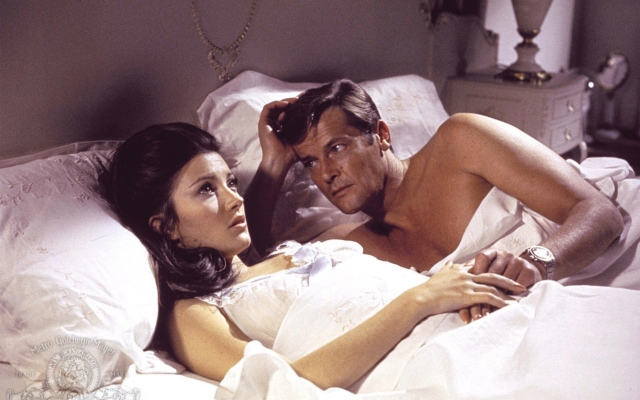 Top-tier Bond Girl: Jane Seymour as Solitaire opposite Roger Moore in Live and Let Die. Credit: Pictorial Press Ltd/Alamy Stock Photo < p> Screenwriter Tom Mankiewicz says Cubby Broccoli gave him several Ian Fleming novels to choose from to adapt for his next film. Mankiewicz chose Live and Let Die, Fleming's second Bond novel, published in 1954.
Top-tier Bond Girl: Jane Seymour as Solitaire opposite Roger Moore in Live and Let Die. Credit: Pictorial Press Ltd/Alamy Stock Photo < p> Screenwriter Tom Mankiewicz says Cubby Broccoli gave him several Ian Fleming novels to choose from to adapt for his next film. Mankiewicz chose Live and Let Die, Fleming's second Bond novel, published in 1954.
“I wanted to do Live and Let Die because it had more edginess,” Mankiewicz said of making the documentary. “Because all the villains were black. And I knew it was very risky because we did it during the Black Panther days. We did it during the real black revolution.”
In the book, Bond goes to Harlem to investigate the case of a SMERSH agent turned voodoo master. There is a good deal of what we might now call «problematic» material in Fleming's Bond books. Of all the «Live and let die» — the most outwardly racist. One chapter of «N—— Heaven» is awkward to read; elsewhere, Fleming uses offensively stereotypical jargon and describes black strip club goers as «choking and grunting like pigs at a trough». Unsurprisingly, racist language and descriptions have been edited out in a recent reissue following feedback from sensitive readers.
The film, which was not cleared of accusations of racism even at the time of release, was profitable on the early 1970s trend of black exploitation films, including «Baadasssss Song» and «Shaft» by Sweet Sweetback. Live and Let Die profited from Blaxploitation in the same way that Moonraker later profited from Star Wars. Urban black moviegoers made up a significant portion of the American audience.
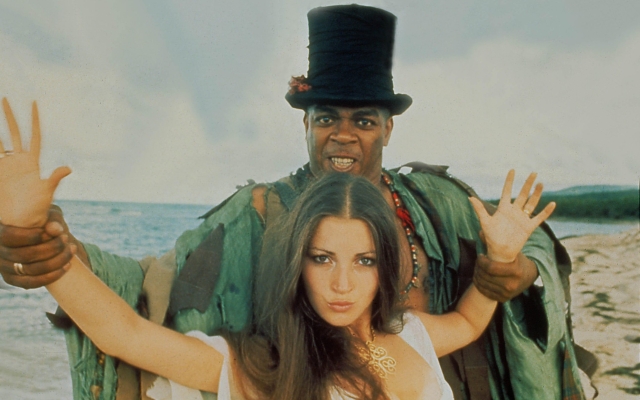 Jeffrey Holder as voodoo priest Baron Samedi and Jane Seymour as Bond Girl Solitaire Credit & Copyright: Entertainment Pictures
Jeffrey Holder as voodoo priest Baron Samedi and Jane Seymour as Bond Girl Solitaire Credit & Copyright: Entertainment Pictures
In Mankiewicz's revision of the novel, Bond investigates three murders (the murders replace the traditional pre-headline sequence) and goes on the trail of a drug lord known as Mr. Big and the dictator of the fictional Caribbean island of San Monique. named Dr. Kananga. Bond discovers that Mr. Big and Dr. Kananga are the same (both played by Yaphet Kotto). Kananga plots — literally — to flood the US with heroin. (The villain was actually named after Ross Kananga, the crocodile farmer who starred in the movie.)
As described in the 2002 book James Bond: Legacy by Bruce Scivalli and Bond historian John Cork, Live and Let Die came at a time of change. For Bond, the Cold War thawed somewhat. Terrorism, Watergate and the economic downturn have shaken the real world. Comedy, wrote Schivally and Cork, «was exactly what the world needed.» «Live and let die» is far from Bond's first outing on silly things. In 1967, the film You Only Live Twice, starring Sean Connery, turned the Bond film formula into a self-parody with its bald cat-stroking villain, piranha pools and hollowed-out volcano. And after the seeming failure of Lazenby's On Her Majesty's Secret Service, a dark film that more closely followed Fleming, Diamonds Are Forever turned the series into an action comedy — a goofy, Americanized Bond. «Diamonds Are Forever» became a hit. Live and Let Die followed suit.
Moore is in a brash, self-aware form from the start. In his first scene, M and Moneypenny come to Bond's bachelor apartment to brief him on the mission. Bond chats with an Italian MIA agent. M gives Bond a powered Rolex watch that emits a «super-strong magnetic field». Moore immediately uses a magnet to unzip the Italian agent's dress. «My favorite Bond gadget of all,» he admitted.
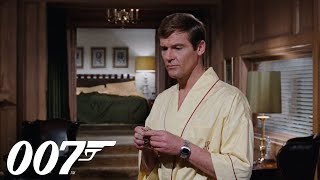
For Matthew Field, this scene is an example of how Live and Let Die changed the Bond formula. «Bond didn't even show up in front of the headline,» he says. «There was no Q, and the scene of M's briefing with 007 took place over coffee in Bond's kitchen, not in the stuffy walls of Whitehall.» (And what a kitchen it is, with Scandinavian '70s décor that can make hipsters cry, while Bond is dressed in a pastel yellow bathrobe. Signed «JB», of course.)
For Fleming's purists, Moore is too much of a joke. The film blog Incredible Suit, which chronicles Bond with a series of insightful and often hilarious reviews, describes Moore as «the worst thing that ever happened to James Bond». Director Guy Hamilton was also unsure about Moore. In particular, he didn't want any of the surprise-inducing stunts that viewers would recognize from his role as Simon Templar on the television series The Saint. Now Roger Moore is the face of Bond's backward past, an era of servile, casual racism and patronizing sexism. But like Connery in the 1960s, Pierce Brosnan in the 1990s and Daniel Craig in the 2000s, Roger Moore was the perfect Bond for his time.
Bond Moore's brilliance really lies in the fact that he's superbly unfashionable — boxy even — with his flared trousers, outdated looks and penchant for safari-inspired suits. That's why high-octane stunts are so fun — the absurdity of Rog in a lemon jumpsuit skiing and tumbling backwards — and why Alan Partridge made Moore a hero and style icon. As detailed in James Chapman's License to Thrill, Bondmania, which was part of the cultural rhythm of the swinging sixties, is over. Spies were going out of style. In a review published in July 1973, Time magazine described that Bond was «a series long past its brief historical moment». /> Roger Moore on the street during the filming of Live and Let Die. Photo: ZUMA Press, Inc./Alamy Stock Photo
Watch Moore wandering around Harlem — one step behind the streets and failing to impress the cool cats with his usual «Bond, James Bond» patter. “Names are for headstones, baby,” Mr. Big says. «You will pull this idiot out and destroy him.»
Moore never took Bond seriously. «I think he's kind of a ridiculous hero,» he said. Moore had read Fleming's books and was struck by a line describing how Bond killed out of debt, but he never liked it. Here's how Moore played it. Although his Bond, it's safe to say, definitely liked innuendo and women. As he tells the Solitaire: «There is no point in leaving the house half-cocked.»
Tom Mankiewicz originally suggested Diana Ross for the role of Solitaire, Kananga's personal clairvoyant. “I thought it would be, in a good way, breaking the barrier,” Mankiewicz said. But David Picker of United Artists was concerned about Bond's interracial relationship, just in case it didn't play well in some US cities. There were already box office concerns with the new Bond actor. The film «On Her Majesty's Secret Service» starring Lazenby disappointed. In anticipation of this, EON and United Artists sold Bond the broadcast rights for a substantial $17 million, which will cover the costs if Live and Let Die doesn't become a big success.
 Live and let die for Gloria Henry, Roger Moore and Jane Seymour. Photo: EON LLD 026/Moviestore Collection Ltd/Alamy Stock Photo
Live and let die for Gloria Henry, Roger Moore and Jane Seymour. Photo: EON LLD 026/Moviestore Collection Ltd/Alamy Stock Photo
Despite the protests of United Artists, Bond does have an interracial relationship in Live and Let Die — with excruciatingly useless CIA agent Rosie Carver, played by Gloria Hendry. «The story was about black people, and we couldn't pretend that Bond wasn't attracted to a black woman,» Mankiewicz said. “We compromised a bit. They kissed and obviously made love, but you don't see them in bed together.»
Rosie Carver, as it turns out, works for Kananga. He's just as useless, playing on the old Bond villain's incompetence joke. He fails to get rid of Bond in various ways — such as putting a snake in his hotel room or leaving him on an island to be eaten by crocodiles — when a normal bullet in the head would have done the trick. Although Kananga is also the proud owner of a cave lair with an underground monorail and a shark aquarium. Plus two henchmen for loyalty: the voodoo man Baron Samedi (Jeffrey Holder) and the clawed Tee Hee (Julius Harris).
Cotto had a difficult relationship with the film. He didn't like the script or the portrayal of black characters (who are almost all villains and end up dead). Guy Hamilton, in turn, did not like Cotto. «He behaved very badly, he tried to make life difficult,» Hamilton told Matthew Field and Ajay Chowdhury for Some Kind of Hero. Cotto, however, told the writers that he was simply being aloof and that «method actors are misunderstood».
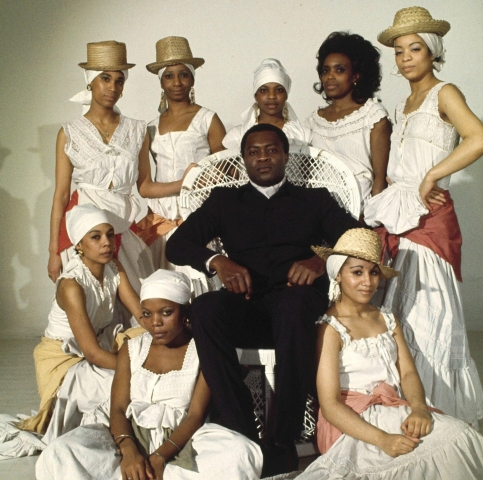 Photo shoot for Live and Let Die Credit: Entertainment Pictures/Alamy Stock Photo
Photo shoot for Live and Let Die Credit: Entertainment Pictures/Alamy Stock Photo
Roger Moore, writing in The James Bond Diaries, a promotional liner note for the film, recalled Cotto cheering Black Power during the photo shoot, prompting backstage friction. Cotto was then excluded from further publicity and interviews. «As a black actor in a predominantly white industry, he may have felt he had to make a name for himself,» Moore wrote. Cotto described how he sat alone in a bar crying when the movie came out.
Moore witnessed racial tension on the streets of New York. He claimed that the production had to pay protection money to film in Harlem, and saw one of the black stuntmen from the crew being harassed by the police and arrested.
It was Yaphet Kotto who rightly offered to hire black stuntman. Men. He pointed to the film's characteristic boat chase. “If you watch the movie, you will see that all these boats are driven by black drivers,” he told Field and Chowdhury.
Production began with a boat chase filmed across the lakes and bays of Louisiana. Led by stuntman Jerry Komue, it took 24 days and 29 boats. Comuax got behind the wheel of a Glastron GT-150 speedboat for the big stunt, a 120-foot jump between rivers. The jump that set the Guinness World Record took six weeks of preparation and hundreds of practice jumps. Comeuax had to crash into specially made ramps at a speed of 75 miles per hour. And it's good that this trick was performed by Komua. When Moore got into the boat, he twisted his knee and broke his front tooth.
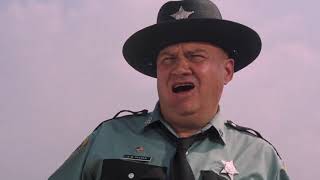
The chase was again the answer to the emergence of a new Bond. David Picker told Tom Mankiewicz: «I want this movie to have enough material so that, no matter who plays Bond, it's an amazing, entertaining movie night for everyone.»
The action on the speedboat is exciting on its own, though the overall sequence sags oddly as it is punctuated by scenes of comic redneck sheriff J.W. Pepper, played by Clifton James. Mankiewicz was sensitive to the fact that the villains were all black and created the JW Pepper character so that someone else could be the butt of jokes. Pepper, a relentless irritant (he returns in The Man with the Golden Gun), is proof that Roger Moore is the only comic relief Bond has ever needed.
Jumping from a height of 120 feet left a mark on the Bond series. (Not to mention another great Live and Let Die car stunt: Bond drives a double-decker bus under a low bridge and cuts off the top deck.) Previous films were, of course, action-packed, with car chases and wheel racing; punch-ups; underwater battles; ski chases; and some hanging from an oil rig. But it was during the Moore era that the record-breaking spectacular stunt became a staple: the corkscrew jump in The Man with the Golden Gun; skydiving from The Spy Who Loved Me; Bond and Jaws dangle from cable cars at 1,000 feet in Moonraker; and Bond climbing hundreds of feet up a sheer cliff in For Your Eyes Only, only to fall again when a henchman knocks him off the top.

But Live and Let Die is best remembered for another trick: Moore runs over a row of crocodiles, as if on steps, and escapes from the literal jaws of death.
Crocodiles were involved in the film when, while scouting locations in Jamaica, production designer Sid Kane noticed a sign that read «Troublemakers Will Be Eaten» — the ominous entrance to Ross Kananga's crocodile farm. “Absolutely wonderful man,” Guy Hamilton said of Kananga. «Completely crazy.» Kananga, he told the crew, saw his father eaten alive by a crocodile. Kananga not only gave his name to the film's villain, but also performed a crocodile run. To perform the trick, Kananga tied the legs of the crocodiles to concrete blocks and held them in place, but they snapped and whipped him as he ran down their backs. It took five attempts, all of which are featured in John Cork's documentary Inside Live and Let Die. On the fourth attempt, the crocodile caught his paw in its jaws.
Fifty years later, the most obvious legacy of Live and Let Die is Paul McCartney's theme. From the first seconds — «When you were young and your heart was an open book» — this is an explosion of excitement, waiting in the wings; that specific, skin-penetrating magic that happens when a Bond theme and title sequence kicks in, but somehow bottled up. McCartney continues to recreate the excitement with pyrotechnic renditions of the song that come closest to the live version of the Bond titles.
McCartney reunited with Beatles producer George Martin, who scored the Live and Let Die album. But, as is often said, Cubby Broccoli didn't like the song (co-written by Paul and Linda McCartney). That was until the head of EMI told Cubby it was definitely a platinum hit and offered $1 million for the rights. In another story — a tale often made up by Martin and McCartney — Saltzman thought McCartney's version was a demo and asked, «Who should we sing it to?» The assumption seemed to be that he expected a woman to sing the tune. In fact, BJ Arnau in the club scene is a bit more in line with the traditional Bond song. However, music journalists Allan Kozinn and Adrian Sinclair, investigating the disclosed contract details, confirmed that Wings were always in line to perform the title track. McCartney seems to have been spinning the legend for the better part of 50 years.
Released in the US on June 27, 1973, Live and Let Die was a success beyond all expectations. It made $126.4 million worldwide, the biggest bond since Thunderball, at the height of the bond mania. Moore proved that Bond can be remade, even if he is far from Fleming's blunt tool. But the fact of the matter is: Roger Moore is a Bond born not of Fleming, but of the very formula of a Bond movie, a character perfect for that moment in the series' history. (And by costume, I mean wearing a pale blue tracksuit with flared trousers.)
For Matthew Field, the theme of black exploitation «proved for the first time that Bond could explore other genres.» Moore as 007 may not have been the show's cultural zenith, but Live and Let Die set the pace for time chasing and moving with the times, something that still underpins Bond's longevity on the big screen. Fifty years later, Live and Let Die is a key Bond film. As Field says, «Talk about reboot.»









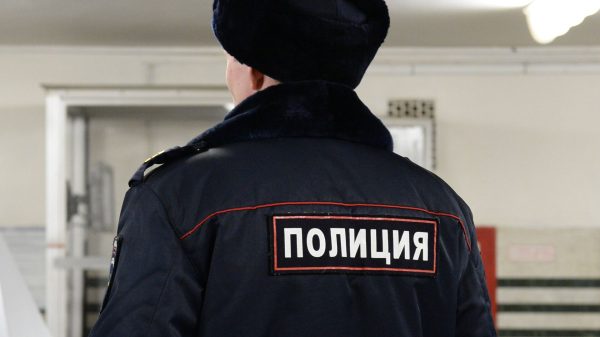
















































Свежие комментарии